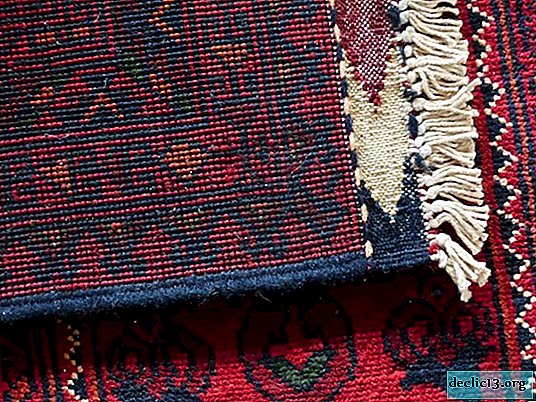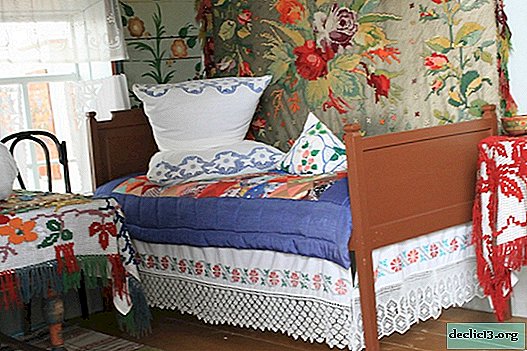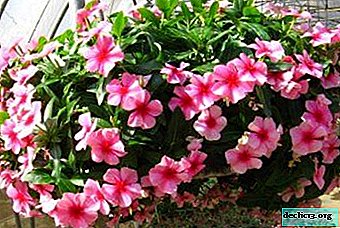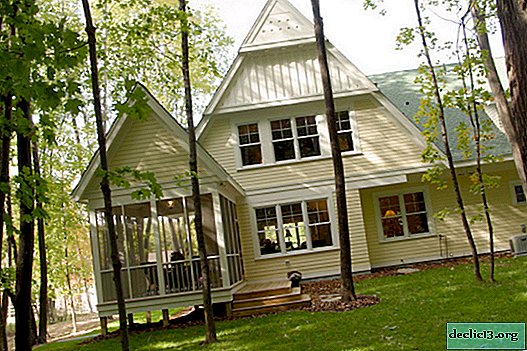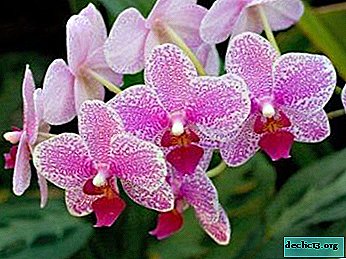Fascinating Chinese Wisteria Alba - features of leaving, planting and other nuances
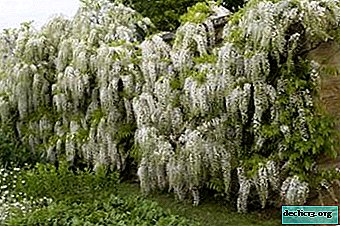
The Bean family has presented to mankind not only vegetable crops. Many distant relatives of peas and beans are cultivated as ornamental plants. For example, the article will discuss the Wisteria of Chinese Alba, which refers to legumes. We will tell you what Wisteria Chinese Alba is, how to care for it at home, how to propagate and how the flowering process is going on, as well as what diseases and pests can threaten it.
Botanical Description
The genus Wisteria, or Wisteria (lat. Wisteria, sometimes Wistaria) includes ten species. All of them come from Asia - from China, Japan and Korea. A native of China, Chinese Wisteria (Wisteria sinensis) first came to Europe in 1816, when members of the East India Campaign sent several cuttings to England. The plant quickly gained popularity, and in 1844 the botanist Robert Fortune discovered specimens with white flowers (before that, only plants with purple and blue flowers were known).
Chinese Wisteria is a perennial deciduous liana with a woody stem. Clinging to trees, it reaches 20-30 m. You can grow it like a tree. The leaves are dissected, consist of 9-13 oblong leaves 2-6 cm long, the total leaf length is 10-13 cm. Flowers that resemble pea flowers in shape are collected in hanging brushes up to 40 cm long.
A distinctive feature of the Alba form is the white color of the flowers; some hybrids may appear pinkish or lavender. A flowering plant produces a pleasant aroma resembling the smell of grapes or lilacs. Subsequently, beans are tied in place of flowers.
Attention! Chinese Wisteria contains toxic substances that can cause severe digestive upsets. It must be grown in places not accessible to children and pets.In nature, Chinese Wisteria is found in the central and eastern regions of China, as well as in Japan, in mountain forests. It is cultivated in many regions with a warm climate, in particular, in the Crimea, but some varieties well tolerate even the climate of the Moscow region. It is winter-hardy, the root system is able to withstand short-term cooling to -28 ° C, however, shoots often die.
Care
You can grow this form of Chinese Wisteria not only in the garden, but also on the windowsill. In this case, a number of conditions must be observed.
- Temperature. In summer, the plant will feel good at a temperature of 20-30 ⁰С, in the winter period wisteria need to maintain a temperature of 10-15 ⁰С.
- Watering. Wisteria should be watered regularly, but do not allow excess water. During the formation of buds, the plant should be watered abundantly and often, then, when the buds are ready for flowering, reduce the amount of moisture. It is necessary to monitor the state of the earth in the pot - it should not dry out. In the winter period (from the beginning of October) watering is required only occasionally.
- Lighting. It is preferable to choose the southern windowsill, since the photophilous wisteria should be exposed to direct sunlight for at least 5-6 hours every day.
 Priming. You can purchase a special mixture, or you can prepare the soil yourself by mixing sheet soil, turf soil and sand in a ratio of 4: 1: 1. In order to disinfect and destroy parasites, the soil is calcined in the oven or treated with fungicides and insecticides.
Priming. You can purchase a special mixture, or you can prepare the soil yourself by mixing sheet soil, turf soil and sand in a ratio of 4: 1: 1. In order to disinfect and destroy parasites, the soil is calcined in the oven or treated with fungicides and insecticides.- Pruning. To stimulate the formation of buds, you need to cut off the growing side shoots of wisteria, leaving 2-3 of the strongest shoots. In addition, pruning is used to give the liana a tree shape. For this, only one shoot is selected, all the others are cut off.
- Top dressing. Top dressing is required in the spring, during the budding period. Top dressing is applied once every 7-10 days, alternating mineral fertilizers with organic.
- Capacity for landing. Wisteria can be grown in pots or in tubs. The planting tank should be well drained; moisture stagnation is unacceptable in caring for the plant.
- Transfer. Annual transplant into a larger pot is required for plants under the age of 3 years. The method of transshipment, that is, transplantation without destroying a coma of the earth, is used. Adult plants only need to replace the top layer of the earth (5 cm) annually.
Breeding
Wisteria is propagated by Chinese alba with lignified or green cuttings, or seeds.
- Plants obtained from seeds are more resistant, but do not bloom soon, it can take years. Seed propagation is used mainly by breeders.
- A common method of reproduction is by lateral layering.
- When the leaves fall, the lower shoots are pinned to the ground, having previously cut them.
- Sprinkle the shoot with earth, so that only the tops are visible.
- In spring, shoots ring, in autumn they can be separated and transplanted.Reference! If the roots are not well developed, you can wait another year with the transplant.
Bloom
Wisteria Chinese Alba is characterized by long flowering, and it blooms twice - in early spring and late summer. The first flowers bloom simultaneously with the leaves.
Diseases and Pests
- One of the most common pests of wisteria is aphids. Under the influence of aphids, shoots are bent, sticky dew protrudes. In this case, double treatment with an insecticide is required with an interval of 8 days.
- When affected by a clover tick, the leaves acquire a bronze color. Clover mite ruins wisteria flowers. You can treat the plant with garlic tincture or treat it with melation twice with an interval of 3 weeks.
- Among fungal diseases is renal pyriculariosis, which affects the kidneys, on which black plaque appears, similar to mold. Affected branches are cut and burned. At the end of summer, insecticide treatment is required to destroy the circadian plant, the main carrier of pyricularosis.
Similar flowers
Wisteria of the Chinese Alb has many decorative relatives. Here are some of them.
 Wisteria plentifully blossoming (Japanese) - A close relative of the Wisteria of China. The length of the inflorescences can reach half a meter. There are plants with white flowers.
Wisteria plentifully blossoming (Japanese) - A close relative of the Wisteria of China. The length of the inflorescences can reach half a meter. There are plants with white flowers.- Locust - this is the "white acacia" sung in romances. A woody plant from the Legume family with fragrant tassels of white flowers.
- Carrageenan tree - the well-known "yellow acacia". Ornamental shrub with small yellow flowers blooming in early summer.
- Lupineadorning the gardens of even the northern regions of Russia is also a relative of Wisteria. Mostly lupins are herbaceous plants. Blue, pink and white flowers are collected in inflorescences similar to candles.
- Chin Peas - Curly grassy annual plant with fragrant purple flowers, collected in small brushes.
Wisteria on the windowsill can be found infrequently. This injustice is worth fixing. Wisteria Chinese Alba does not require special efforts from the grower, but each summer will generously reward the owner with a waterfall of snow-white fragrant flowers.

 Priming. You can purchase a special mixture, or you can prepare the soil yourself by mixing sheet soil, turf soil and sand in a ratio of 4: 1: 1. In order to disinfect and destroy parasites, the soil is calcined in the oven or treated with fungicides and insecticides.
Priming. You can purchase a special mixture, or you can prepare the soil yourself by mixing sheet soil, turf soil and sand in a ratio of 4: 1: 1. In order to disinfect and destroy parasites, the soil is calcined in the oven or treated with fungicides and insecticides. Wisteria plentifully blossoming (Japanese) - A close relative of the Wisteria of China. The length of the inflorescences can reach half a meter. There are plants with white flowers.
Wisteria plentifully blossoming (Japanese) - A close relative of the Wisteria of China. The length of the inflorescences can reach half a meter. There are plants with white flowers.


